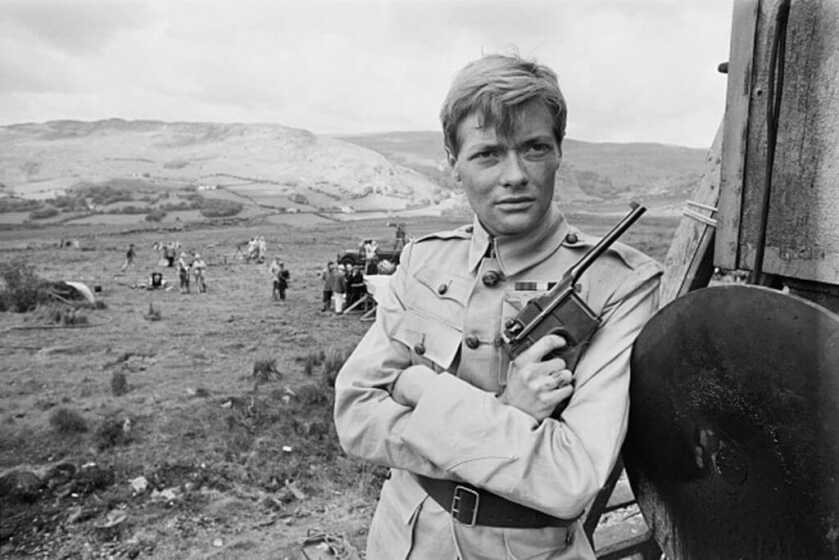
English actor Simon Ward (1941 – 2012) filming ‘Young Winston’, a biopic of Winston Churchill, on location, 30th May 1971. He is holding a Mauser semi-automatic pistol. (Photo by Jack Kay/Daily Express/Getty Images)
Sometimes it is the little things that are ultimately the most important. A modest mistake can topple a government, while an unexpected turn can secure a glorious victory. In today’s tale, an innocuous injury ultimately shaped the destiny of the planet.
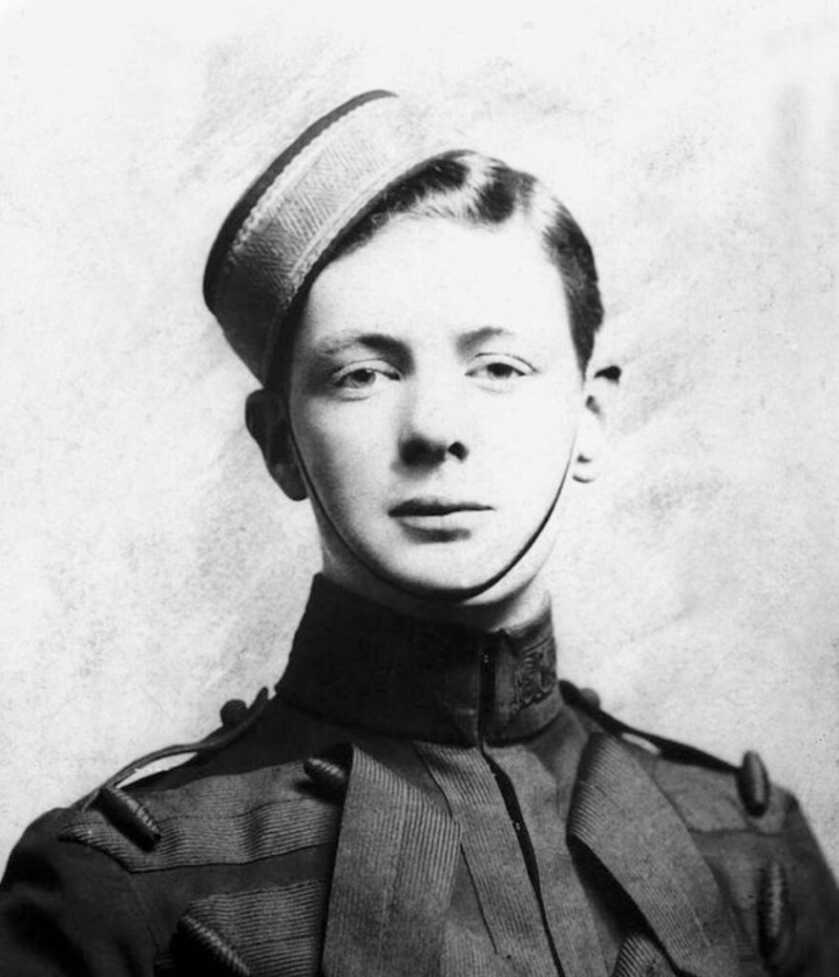
The time was October of 1896, and this fresh-faced English Cavalry officer was the long arm of the British Empire. He served at the whim of the Crown. His first serious posting took him to Bombay, India.
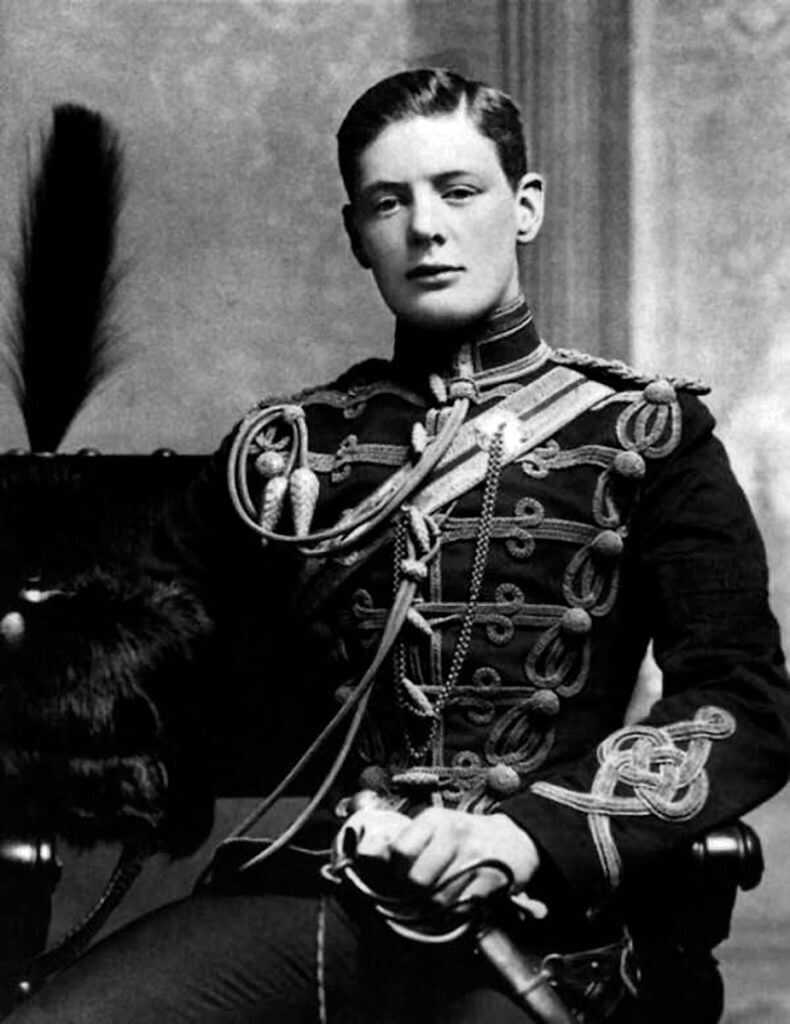
The young man was from aristocratic stock and an accomplished polo player. As his boat met the dock, however, there was an unexpected surge. Without thinking the Cavalry officer took hold of the railing and badly wrenched his right shoulder.
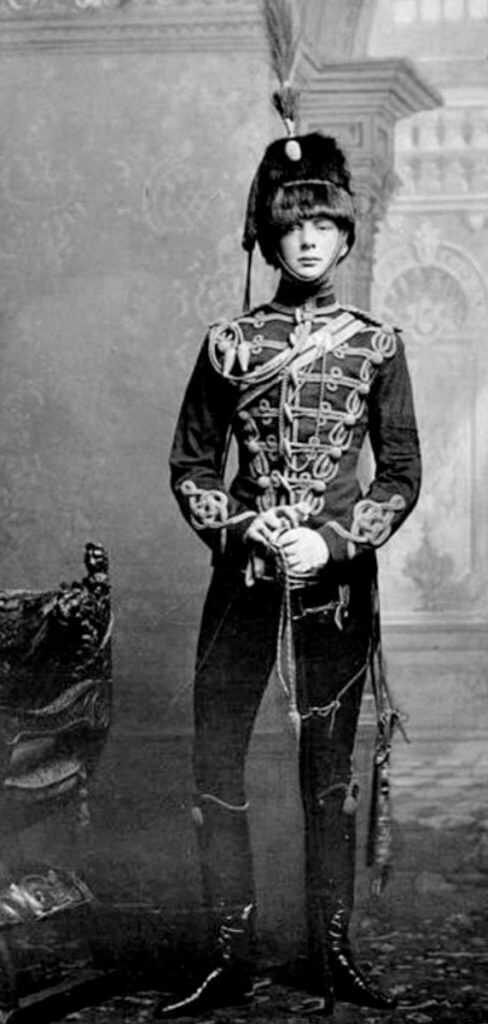
In retrospect, the injury was likely a torn rotator cuff, and it never quite healed. In the days before MRI scanners and orthopedic surgeons you just made do. In this case, the young man would never again swing a regulation cavalry saber with authority. This injury would ultimately save his life.
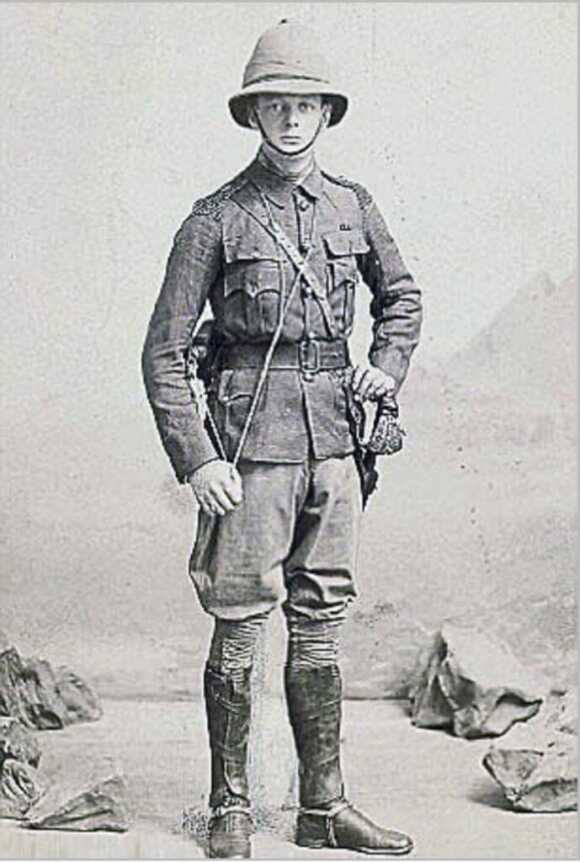
The British Army offered status and adventure, but the pay remained modest. Upon his return to England, the young man borrowed money from his mother and retired to Westley Richards and Company, an esteemed gun shop of the era in Birmingham, England.
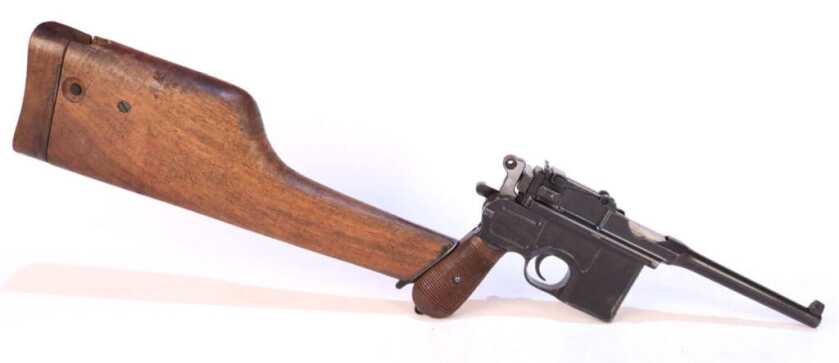
Gun control then was not a thing. Well-heeled gentlemen of means could buy any military firearm that struck their fancy over the counter cash and carry. This young man settled on an odd-looking handgun imported from Germany.
The young officer found himself under fire for the first time in Cuba on his 21st birthday. He later said of the experience, “Nothing in life is so exhilarating as to be shot at without result.”
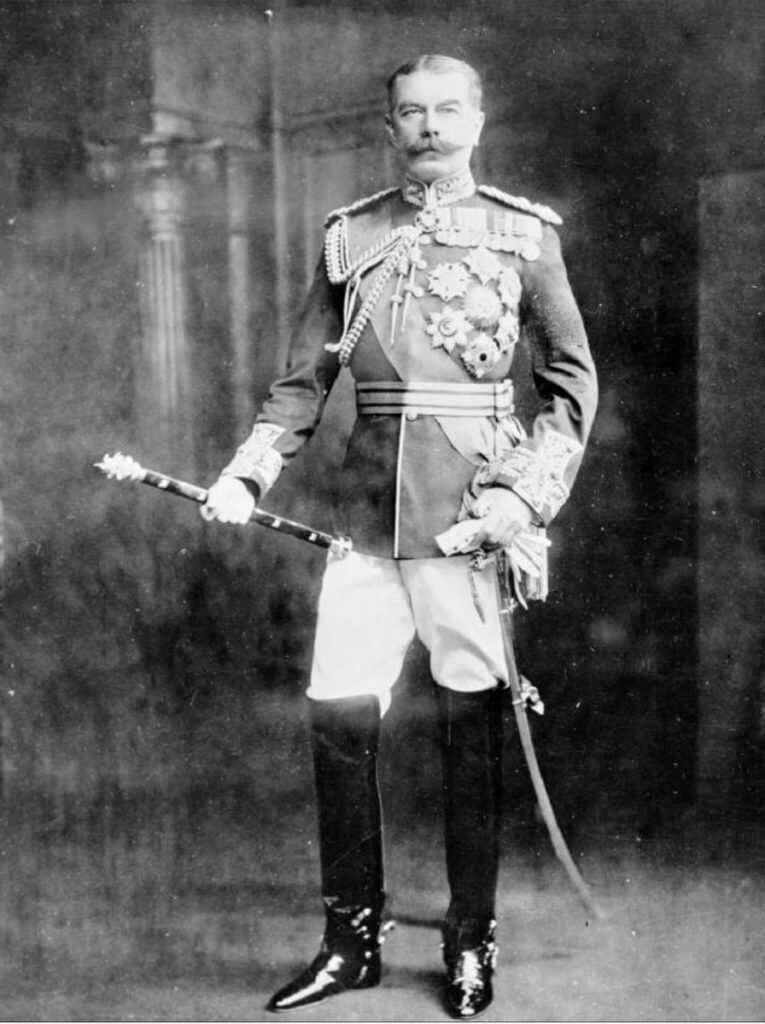
In 1898 this young officer was posted to the army of General Sir Herbert Kitchener billeted in the Sudan. Three years prior British General Charles George Gordon had held out for a year against the forces of the Mahdi Muhammad Ahmad during the Siege of Khartoum. The Mahdi’s troops eventually breached the city walls and killed Gordon. Kitchener was out to re-establish English dominance among what he saw as the unwashed masses of the Dark Continent.
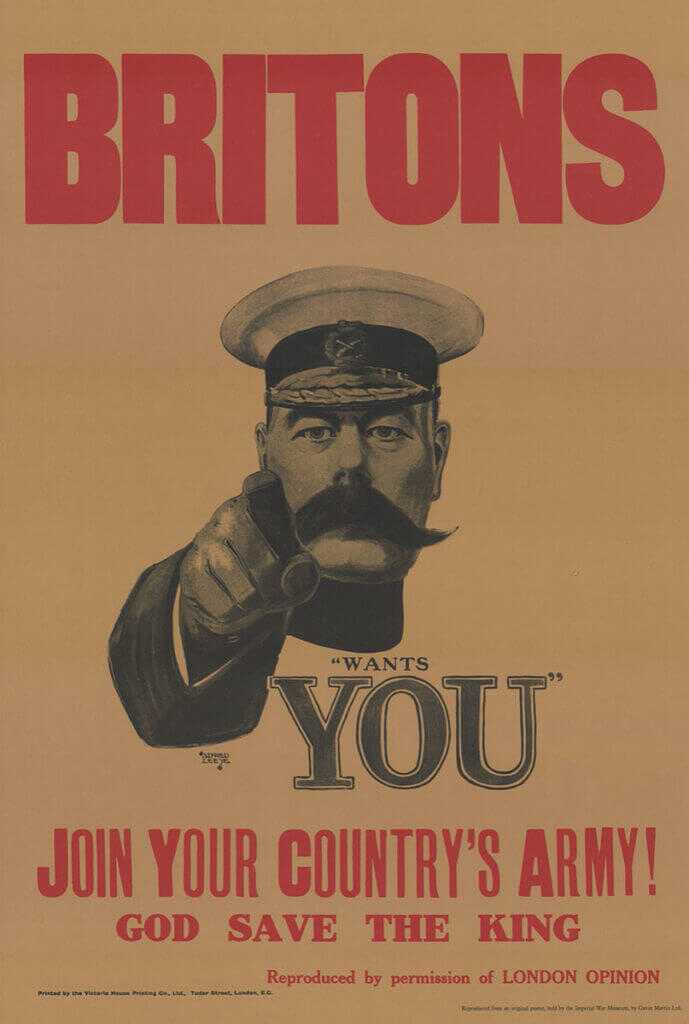
Kitchener’s forces were arrayed against the army of Abdullah-al-Taishi, the successor to the self-proclaimed Mahdi. Kitchener had some 8,000 British regulars as well as roughly 17,000 Egyptian and Sudanese troops at his disposal. Arrayed against these 25,000 or so Commonwealth soldiers were more than twice their number of Muslim fighters. These warriors called themselves the Ansar. The rest of the world knew them as Dervishes.
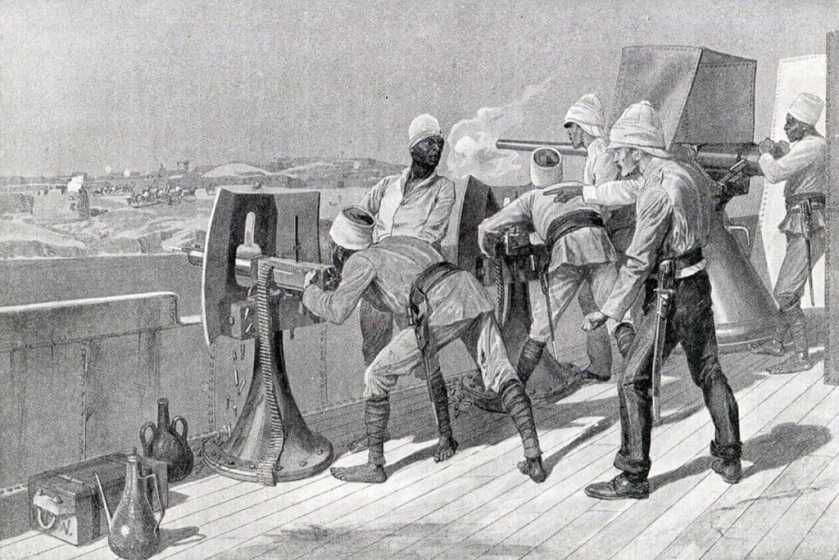
The General deployed his men near the Sudanese village of Kerreri some 11 kilometers north of Omdurman. The city of Khartoum, the site of the aforementioned siege, was nearby. The Mahdists were enthusiastic but relatively poorly armed, carrying a mixture of rifles and spears. Kitchener, though badly outnumbered, was supported by his own organic quick-firing artillery and a flotilla of twelve British gunboats moored nearby in the Nile River.

The British enjoyed the advantage in artillery, modern rifles, and machineguns but were still nonetheless outnumbered two-to-one. In the resulting melee the 21st Lancers, a British light cavalry regiment, advanced to clear the field. This was the last horse cavalry charge executed by the British Army.
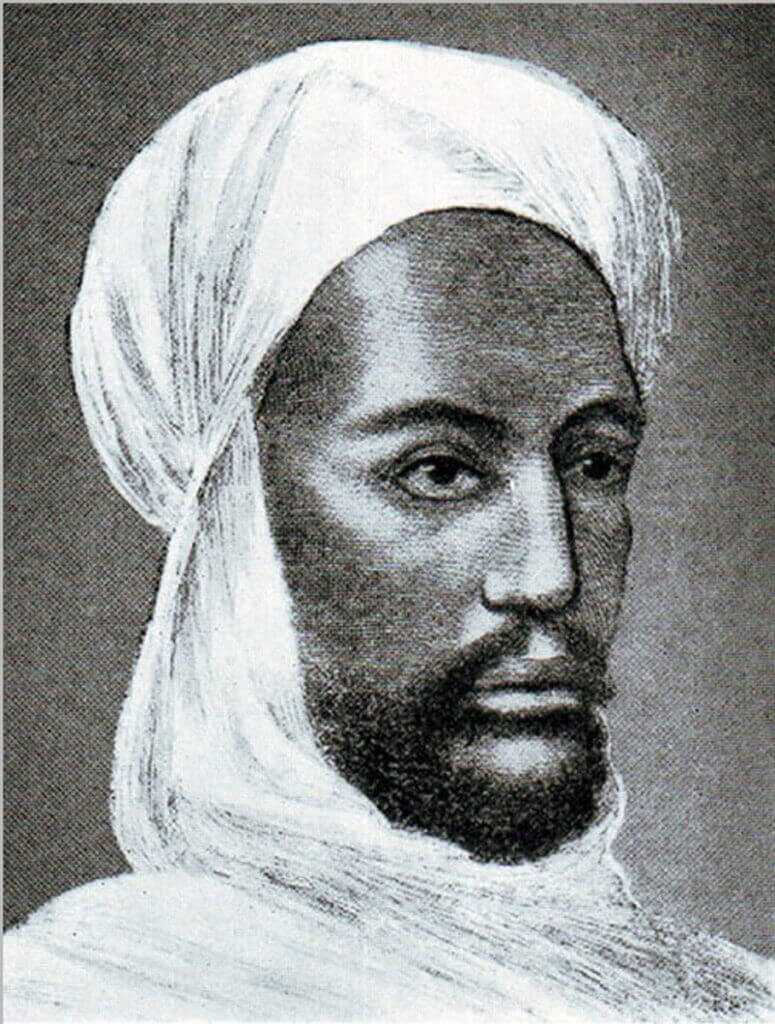
The Muslim forces under al-Taishi were nonetheless skillfully led. A large contingent of Islamic infantry waited in a depression on the battlefield until the British were committed. Surging from cover these 2,500 Dervishes quickly surrounded the 400 British horse soldiers.
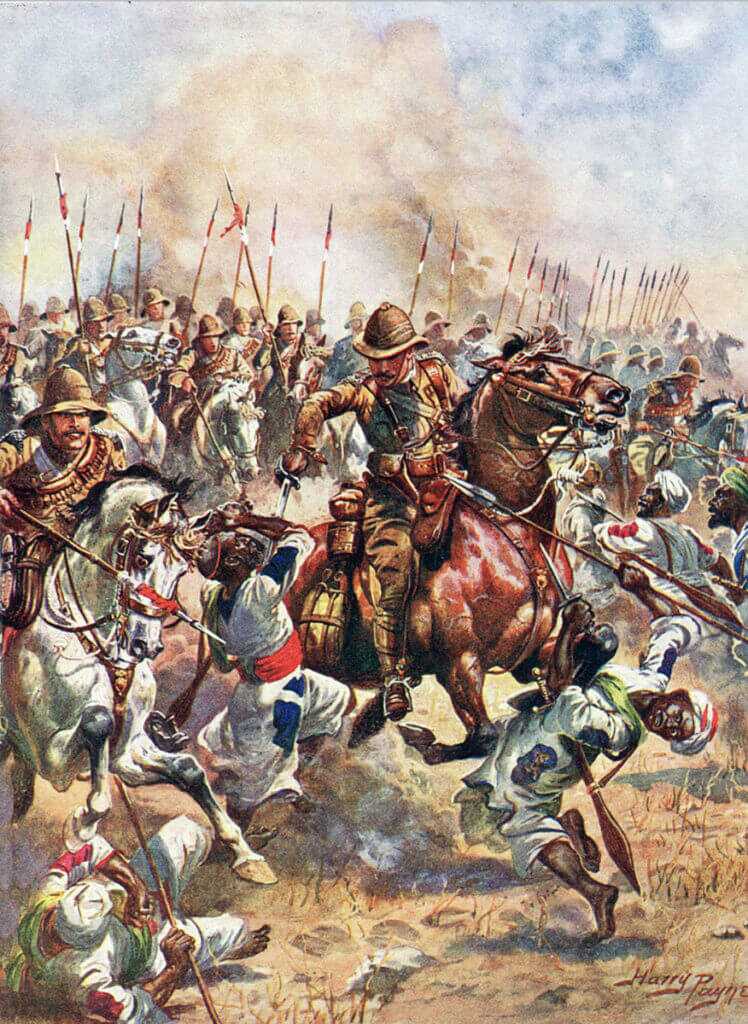
The resulting close-quarters melee was cruel and pitiless. Three Victoria Crosses were subsequently awarded to Lancers who risked death to help rescue wounded comrades. Amidst it, all the young Cavalry Lieutenant Winston Leonard Spencer-Churchill fought for his life. With maniacal Dervishes surging all around, Churchill killed or wounded at least three Muslim soldiers with his German pistol at contact range.

The Mauser pistol his mother had helped purchase in that Birmingham gun shop saved his life that day. He later described the gun as, “The best thing in the world.” Had Churchill been wielding a cavalry saber rather than this unconventional German repeater he would quite probably have been unhorsed and killed.
Little Things Become Big Things
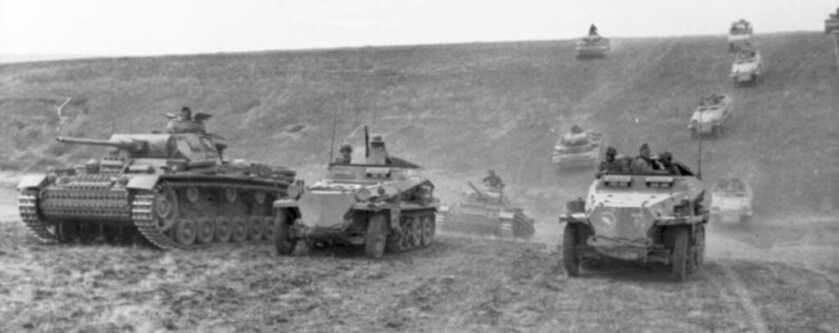
Forty-two years later Great Britain stood alone against the overwhelming Nazi menace. The Germans had swept through the Low Countries and France in a matter of weeks, shocking the planet with the ferocity and effectiveness of Blitzkrieg. With the Americans, months if not years away, from meaningful support and amidst rancorous domestic calls to negotiate or capitulate a single distinctive voice rose above the fray.
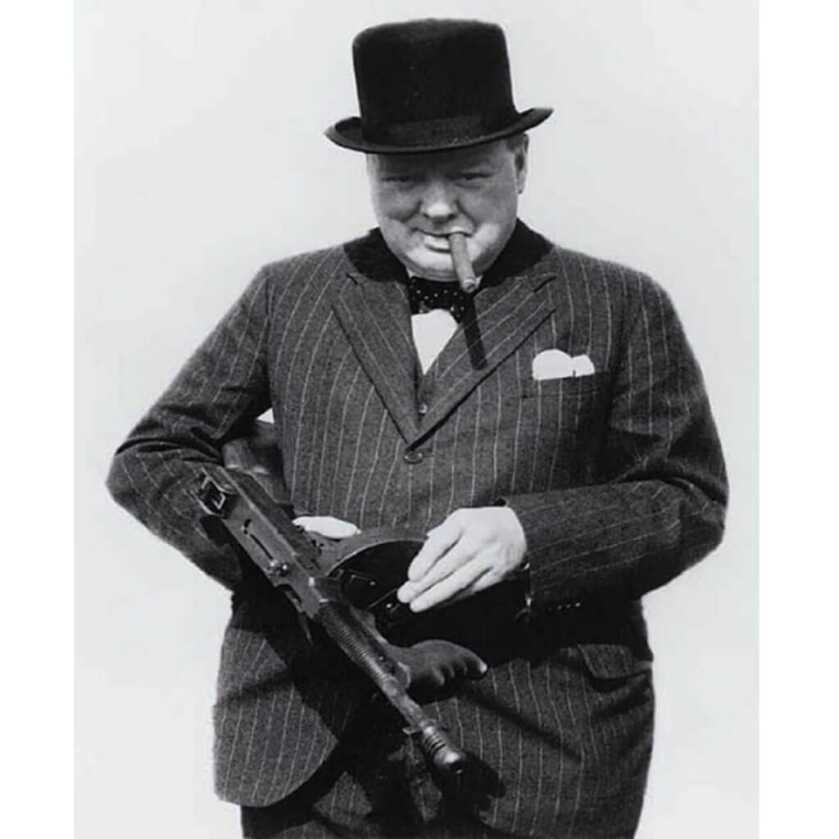
Prime Minister Winston Churchill’s iron will and indefatigable spirit kept a besieged Britain in the war long enough for the industrial might of the United States to turn the tide against the Nazis. His reassuring baritone on the radio steeled English nerves, while his immobile will served as a bulwark against Hitler’s megalomaniacal aspirations. Eventually, Der Fuhrer wearied of the frustration and turned his attention to Russia.
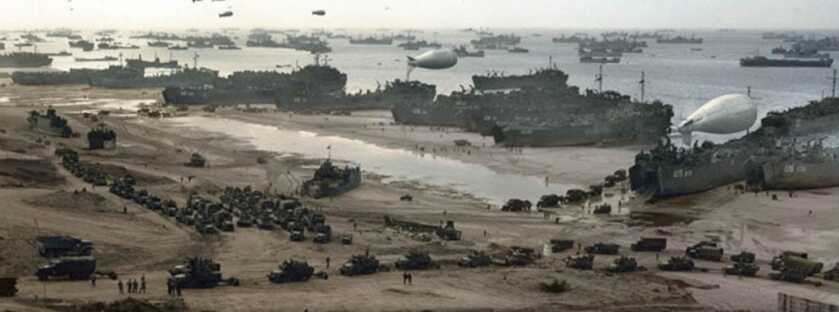
Without England, the Allies likely could not have launched the D-Day invasion that ultimately pushed the Nazis back to Germany. Had it not been for that fortuitous injury on the Bombay dock in 1896 and his German C96 Mauser, Lieutenant Churchill might very well have been killed on that blood-soaked Sudanese battlefield. Had the British sued for peace in 1941 then all of Western Europe might still be underneath the Nazi boot even today.
Winston Churchill’s Extraordinary Pistol
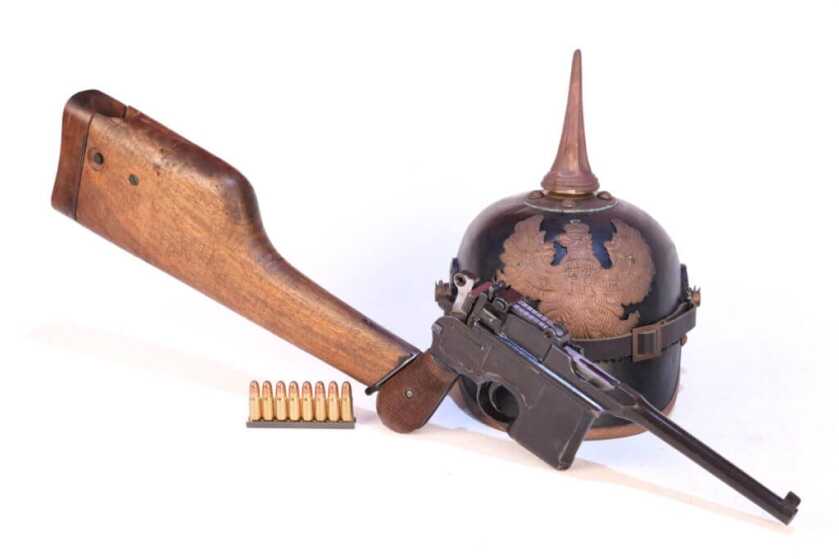
The characteristic front-heavy architecture of Churchill’s C96 Mauser lends the weapon a distinctively rakish, almost lyrical, elegance. Designed in 1893 by the three Federle brothers Joseph, Fidel, and Friedrich, at Waffenfabrik Mauser in Oberndorf, Germany, the C96 was revolutionary for its time.
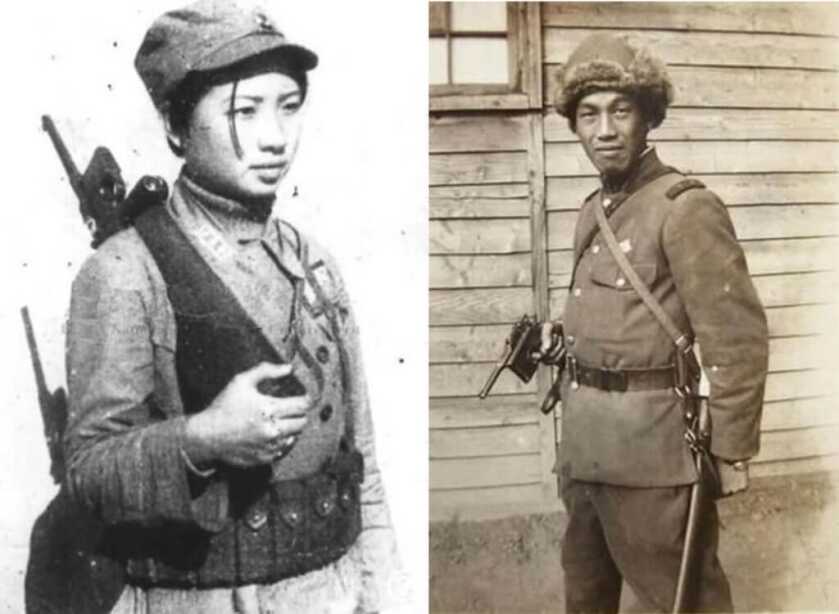
Mauser ultimately produced around a million C96 pistols. Turkey, Italy, Persia, Austria, and France were among the various military users. Foreign-made copies are literally beyond counting.
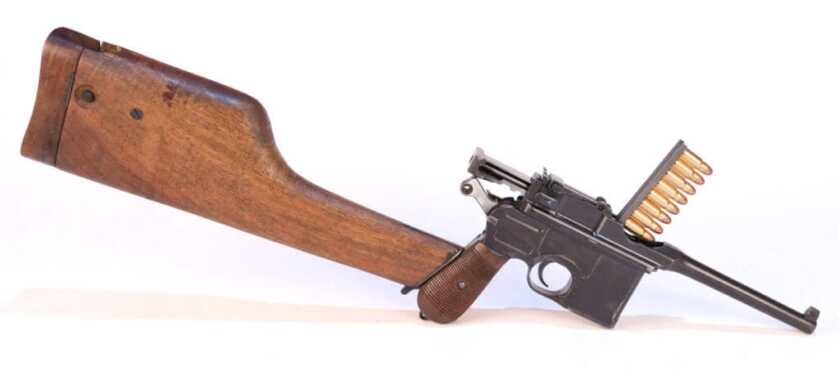
The C96 was recoil-operated with a tilting-lock breech. Recoil with the snappy 7.63x25mm cartridge was surprisingly brisk. Most of the originals carried ten rounds loaded into an integral magazine from the top via strippers. Some variants incorporated removable box magazines of 10 and 20-round capacities. The rear sight was optimistically adjustable out to 1000 meters.
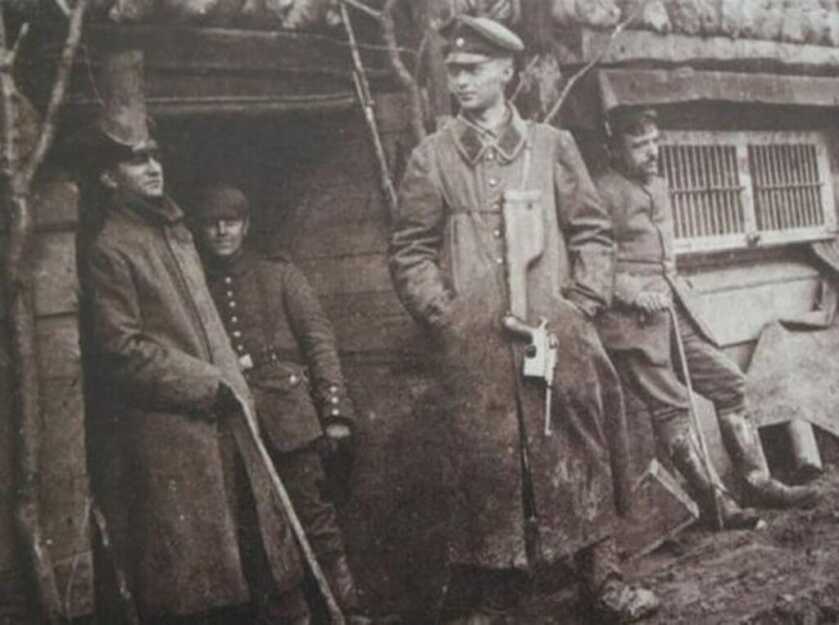

The 7.63x25mm C96 never was a general issue weapon in the Kaiser’s army. Stocked handguns like the P08 Artillery Luger were widely issued, but the C96 in its original chambering remained a private purchase weapon. The Imperial German Army contracted for 150,000 C96’s chambered in 9mm Parabellum for use during WW1. Some 137,000 were delivered prior to the armistice.

The 9mm versions were typically marked with a prominent red “9” burned into the grip. This task was left to unit armorers, however. As a result, some of the 9mm C96’s were never thusly marked.
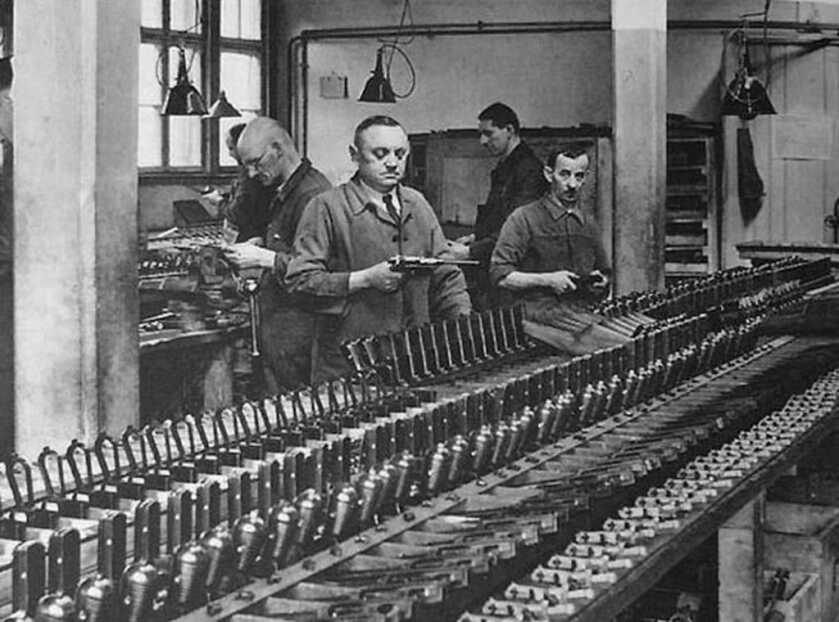
The last large-scale military contract was for 7,800 commercial pistols in 1940 for use by the German Luftwaffe. Production ended in 1937, so this order was filled from the remaining stocks. These guns were issued to motorcycle couriers and flak crews.
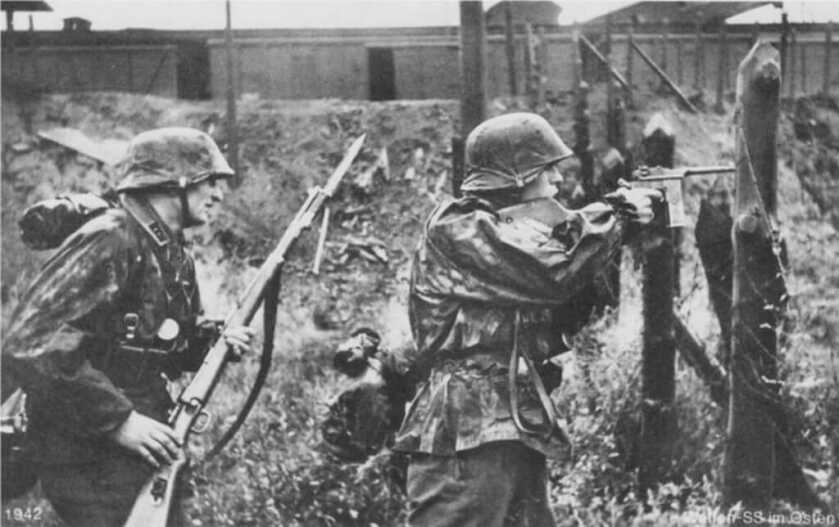
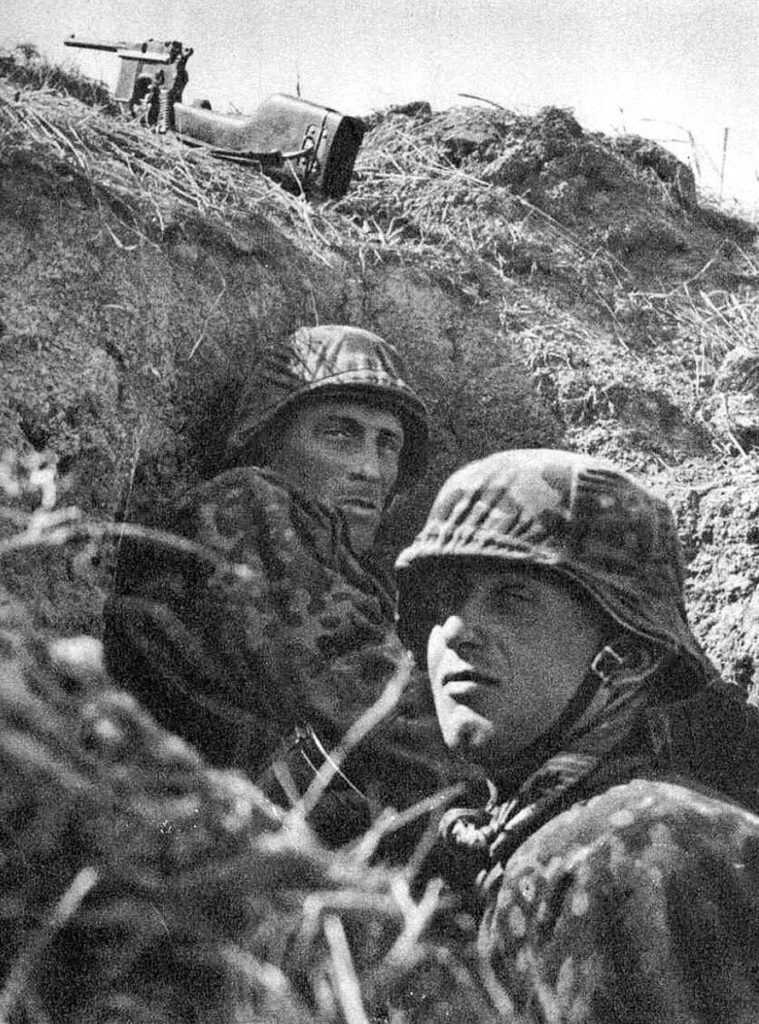
The Waffen SS was always hungry for firearms. Pictorial evidence shows Waffen SS troops using the Model 712 Schnellfeuer selective-fire version. This variant fed from detachable box magazines.
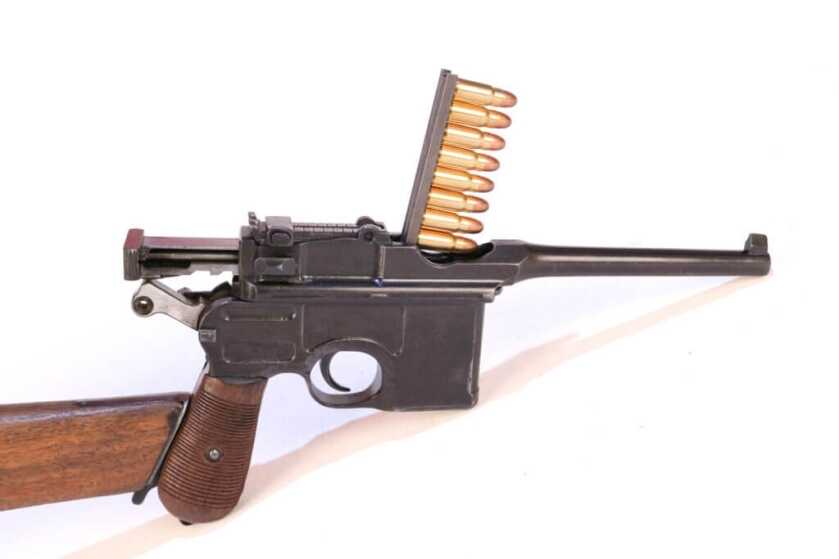
The Germans called the gun the “Kuhfusspistole” or “Cow’s Foot Pistol.” The Chinese called it the “Box Cannon.” The Irish called it “Peter the Painter.” Paul Mauser titled it the “Construktion 96” or C96 for short. The rest of the planet called it the Broomhandle after the distinctive appearance of the pistol grip.
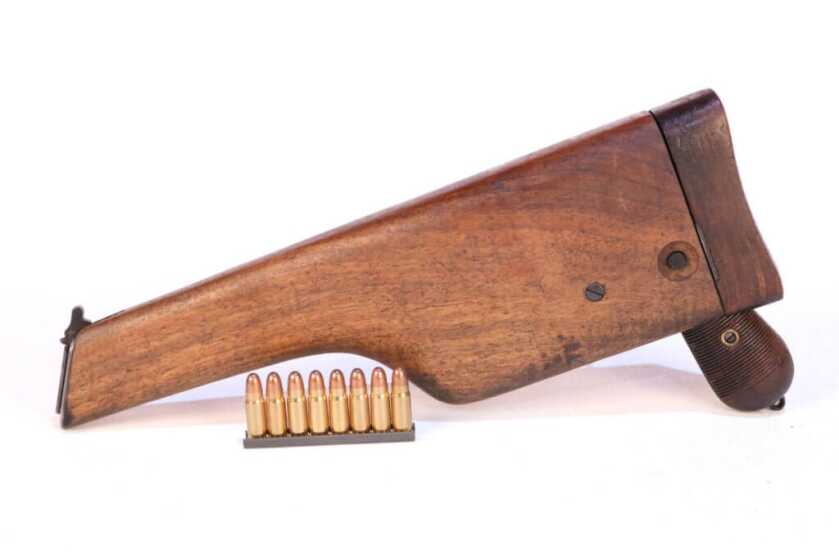
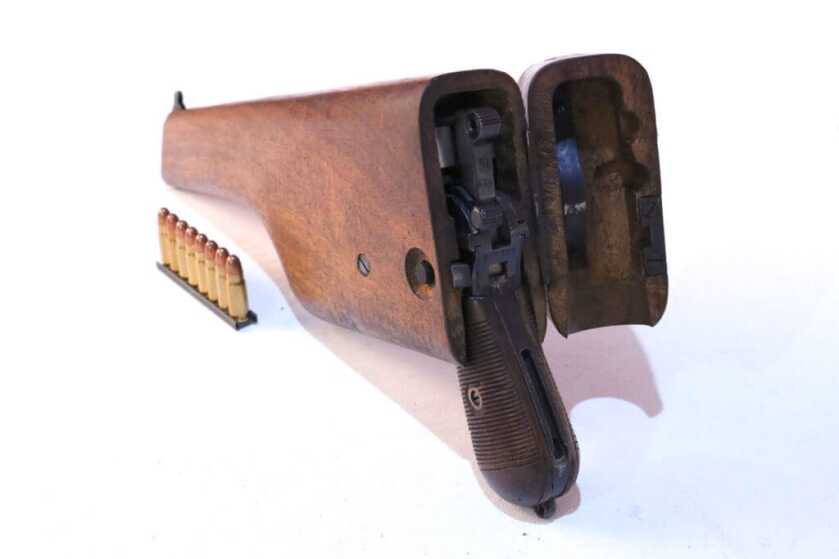
Copies have been produced both under license and otherwise from China to Spain. Chinese warlords used them by the thousands. The most common variant included a dual-purpose shoulder stock that doubled as a holster. Care must be exercised when running the gun on the stock lest the hammer grab your thumb.
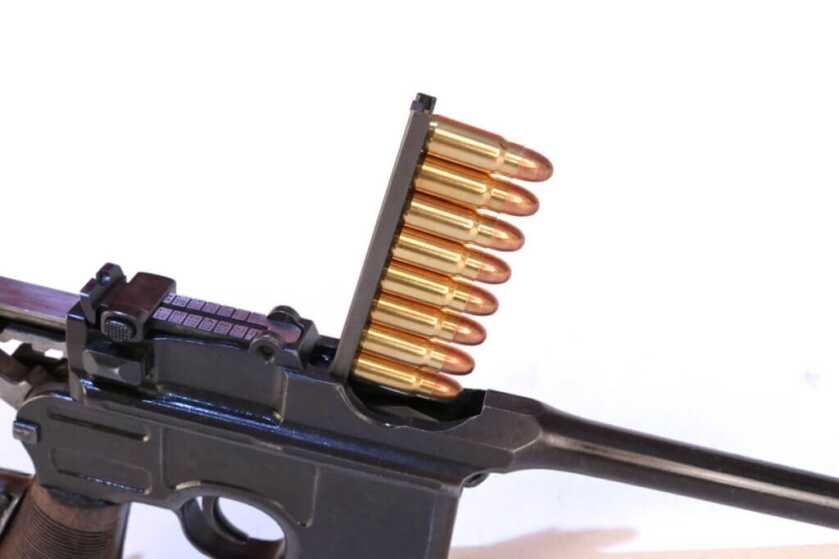
The 7.63×25 mm cartridge was remarkably advanced for its day. Roughly the same size as a standard 9mm Parabellum round, the 7.63x25mm threw an 86-grain bullet at 1,400 feet per second. This was the fastest commercial handgun cartridge in the world until the advent of the .357 Magnum in 1934. The 7.63x25mm would be a serviceable PDW (Personal Defense Weapon) round even today.

The case dimensions were nearly identical to those of the Combloc 7.62x25mm rounds used in the Tokarev TT-33 handguns and PPSh submachine guns. German 7.63x25mm rounds could be safely used in the Russian weapons, but Russian 7.62x25mm rounds were too hot for the C96. The gun was also occasionally chambered in .45 ACP.
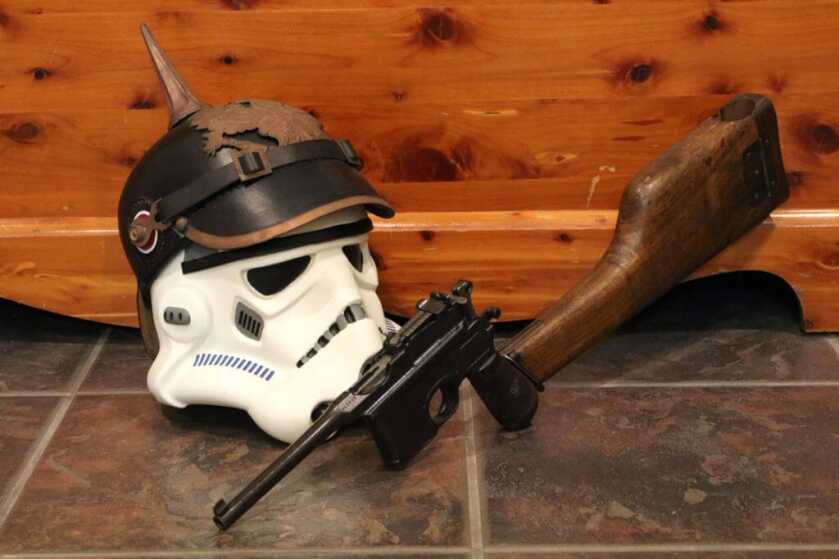
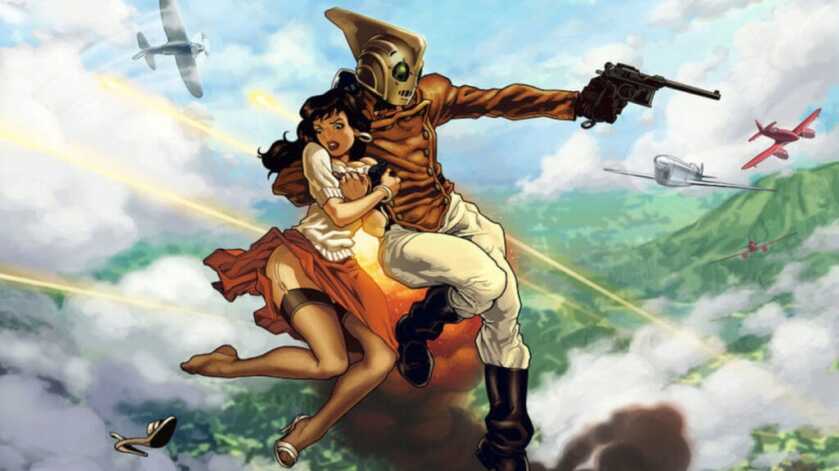
The Broomhandle has subsequently been immortalized in movies ranging from The Rocketeer to Star Wars. Despite its ungainly layout the C96 commanded a loyal following and was used in a variety of high profile assassinations.
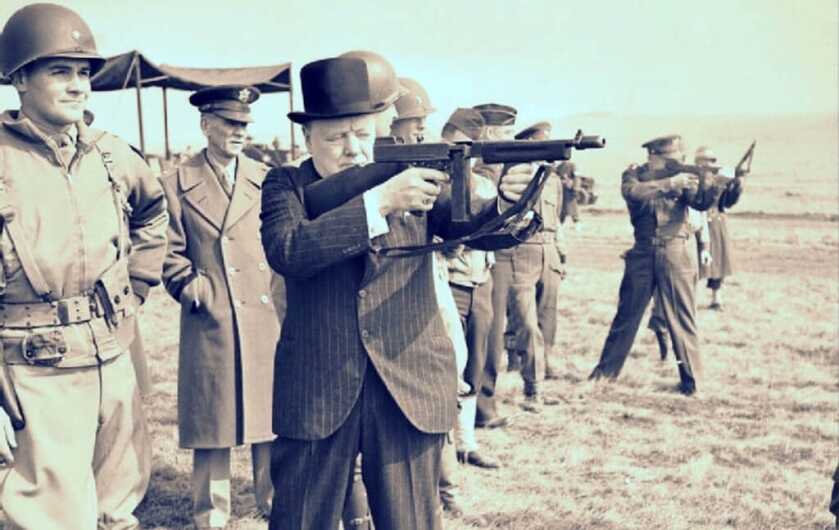
Winston Churchill’s C96 pistol likely saved his life at the Battle of Omdurman in 1898. Had it not been for Churchill’s indomitable force of personality England might have fallen during the darkest days of the Battle of Britain. Sometimes the fate of the world turns on the tiniest things.
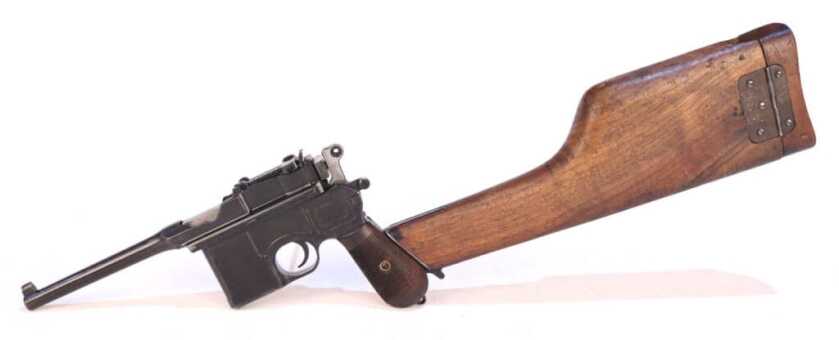
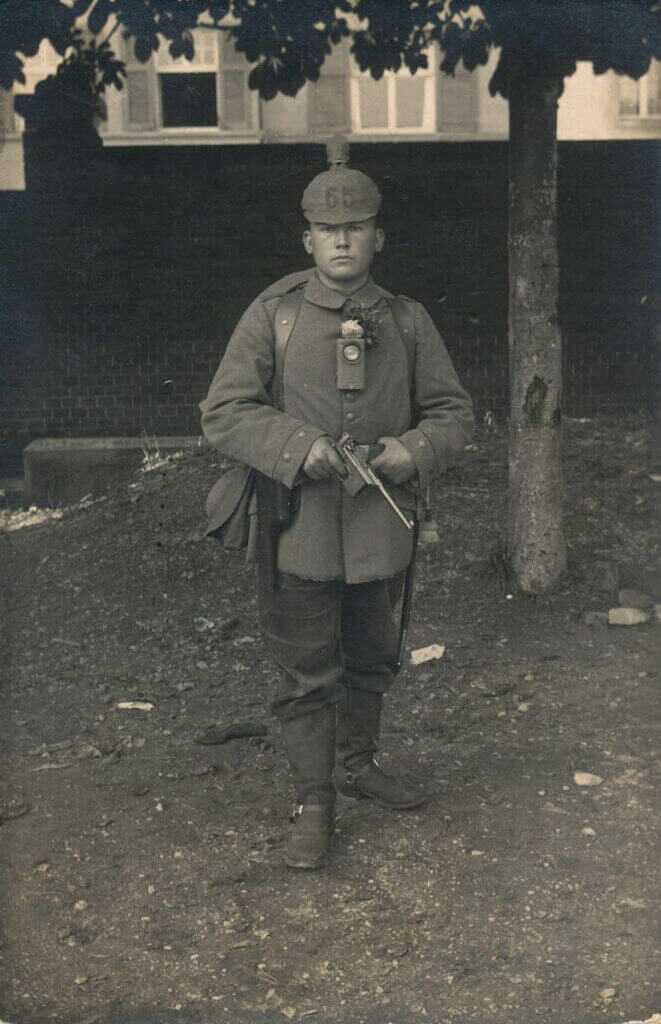
Want a C96 Broomhandle of your own? GunsAmerica.com typically has several listed. Special thanks to www.worldwarsupply.com for the pickelhaube used in our photographs.


Excellent article which I enjoyed very much! I do have one correction, not gun-related, RE: the year General Charles Gordon was killed by The Mahdi’s Ansar army. It was not 1895 but 1885, making it not 3 years that passed between Gordon’s death & the 1898 battle of Omdurman where Kitchener was said to have “Avenged Gordon,” but 13 years.
Would like to suggest a minor correction in the great discussion of Churchill and the Broomhandle. Stripper clips for the C-96 were made in two sizes: the familiar 10-round version and the rare 6-shot version for the 6-shot model of the pistol. The correct and slightly curved 10-shot stripper for the C-96 is shown in only one photo: the photo of the “Red 9”. All the other photos of strippers in the article are for the 8-shot Czech CZ-52 pistol, which can also fire the 7.63 Mauser pistol cartridge. See Jane’s Recognition Guide.
Will Dabbs ought to read Pat Buchanan’s, “The Unnecessary War”. Churchill and FDR should have been hung.
I always wanted a Mauser M712 “Schnellfeuer” Machine Pistol, but even by the 1970s the price was out of my range. I’ve had to discipline myself to avoid the collector urges, or go crazy trying. I’ve tried to stick with modern weapons, with only one exception for the Thompson 1928 sub-gun, but I even then traded it off. Both were a thing of machined beauty!!
Complimenting Will Dabbs, a fellow Mississippian, on his excellent article. I have forwarded the article to both of our daughters with the request that they let their children read about famous folk of World War II.
Thanks Will, for contributing your work.
B. Saucier, Saucier, MS.
No substitute for firepower! We can only speculate what the outcome would have been if the Lancers were armed to a man like Sir Winston.The strongheaded policy of the saber being a primary arm led to this debacle. Those of us that study blade fighting quickly learn that contact weapon’s cut both ways! But it’s easy for us to look back and critique- we weren’t there. Brave men they were,one and all.
Excellent.
I owned a broomhandle from the “chinese horde” that came into the states in the 80’s. It was bad, but a trip to the reliners and 50-60 hours being refinished properly made it into a handsome pistol. It was reasonably accurate but eventually got sold for something a bit newer, with a detachable magazine. I don’t miss it, but I would buy a new-made one in stainless if someone made it. Just sayin’.
Another great article. I believe Sir Winston also was packing his Mauser when he was captured as a war correspondent in the Boer War circa 1899. It could have cost him his life as an armed civilian without uniform.
Dr. Dabbs, if you don’t turn these historical firearm stories into a bound book, it would be a travesty.
I have a couple of Broomhandles. I have yet to experience a misfire, using Fiocchi 7.63. The gun is extremely accurate and I understand that the velocity is even more than the 1400fps as quoted. I regard the C96 as the most delightful high velocity round to shoot. The recoil is perfectly acceptable (much less aggressive than the 45a ACP or a .40). The FMJ 86gn 7.63 will penetrate anything all – I definitely would not trust a ballistic vest to stop this round). The pistol itself is just a beautiful mixture of art and mechanics.
In my opinion, this pistol is the most reliable automatic ever.
Is it the perfect pistol? Maybe but I still have the view “If you can’t do it with a 357, you can’t do it, period.”
So, for self defence, I’ll still stick with Mr. Smith and Mr. Wesson.
Throughly enjoyed this story. Agreed sometimes the most inconsequential things have unknown effects that can only be seen through Hindsite.
Did anyone notice that Winston Churchill was Left eyed dominent?
All of us great ones are!
Based on the Thompson picture?